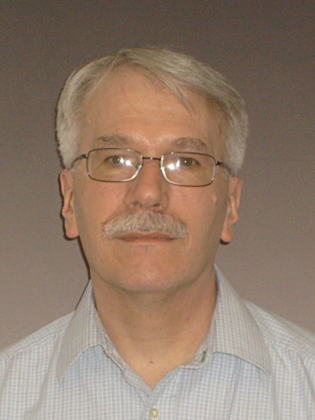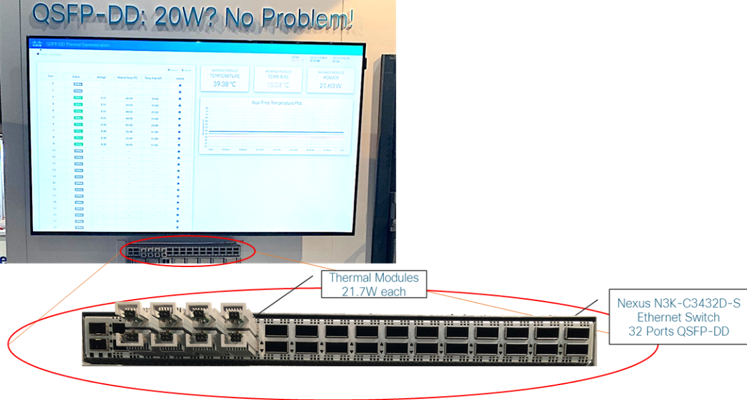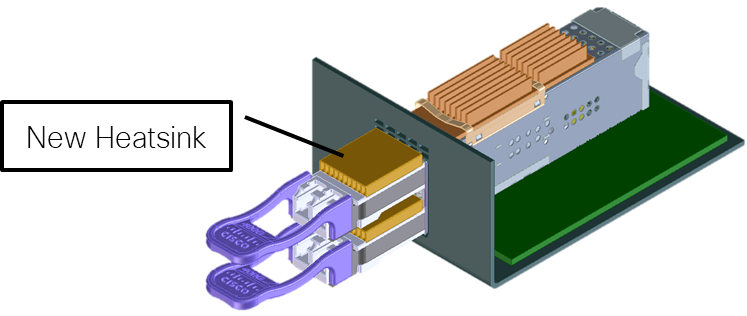
Written by Ray Nering, Product Manager, Transceiver Modules Group, Cisco
At OFC 2019 in San Diego, CA, Cisco demonstrated the thermal management capability of the QSFP-DD pluggable module form factor for 400G applications. The demonstration showed that QSFP-DD can dissipate the heat generated by a transceiver that draws more than 20 watts of power. This will be required for extended reach applications that use advanced optical modulation schemes such as coherent transmission. Host platforms with QSFP-DD ports can therefore support pluggable coherent modules needed for DCI (Data Center Interconnect) and WDM (Wavelength Division Multiplexed) networks.
This is a key point because data centers are often deployed in regions where they may be several tens of kilometers apart. To link them together, data center operators would typically use transponders, which connect to a switch or router and transport the data streams to another data center over relatively long distances with a coherent optical link. However, if coherent modules such as 400G-ZR and 400G-ZR+ modules could be plugged directly in to a switch or router, it would eliminate the need for the additional connection and space for a transponder.
With advances in optical integration and CMOS DSP technology, Cisco expects pluggable coherent modules that support the OIF 400G-ZR specification to begin entering the market in the next 12 to 18 months. These new transceivers may draw 15-20W. By demonstrating 20W capability, we show that Cisco 400G QSFP-DD based platforms will be coherent-ready when those modules are available.

The demo included the recently announced Cisco Nexus 3432D-S ethernet switch. This Nexus 3k switch is a 1RU fixed-port switch with 32 QSFP-DD ports providing data centers with industry-leading performance-per-watt power efficiency at low latency, offering leading analytics.
This switch provides an extreme case environment from a power dissipation perspective, which makes it ideal for demonstration purposes. It was loaded with 8 thermal modules dissipating a total of 174W clustered together in adjacent ports.
The thermal modules were provided by MultiLane and were specifically designed for this demo. These are not functional transceivers, but rather QSFP-DD mechanical housings with heat sources inside. Each module has a series of heaters distribute across its top and bottom, positioned to emulate the thermal profile of real modules with the temperature measurement point over the hot spot of the module, as typically specified.

To accommodate more than 20W, the modules were modified with an additional heatsink on the portion of the module that extends beyond the front panel. This additional material resides within the current envelope of the Type 2 MSA module dimensions of QSFP-DD (see Figure 2).
The chart below shows a plot of the eight modules in the demo and how the hottest module might be expected to perform over the operating temperature range of the Nexus 3432 switch. The demonstration showed that the 8 modules in adjacent ports were dissipating more than 21W each.

At the show floor booth’s ambient temperature of 21C, the case temperatures of the modules ranged from 33C to 44C. This is shown by the colored dots at the 21C vertical axis, and corresponds to a rise in case temperature ranging from 12C to 23C and averaging 18.6C. This means that if the switch were operating in its maximum operating temperature environment of 40C, the case temperature of the hottest module would rise to 63C (rightmost end of the green line). That provides plenty of margin for the typical commercial maximum case temperature of 70C.
In summary, this demonstration shows that the QSFP-DD form factor is easily capable of managing high power dissipation required for coherent transmission in platforms that will be shipping later this year. From copper to coherent, along with backward compatibility with prior generation of QSFP modules, QSFP-DD provides customers maximum flexibility to address the migration to the next step in networking.

great blog Ray. Thank you